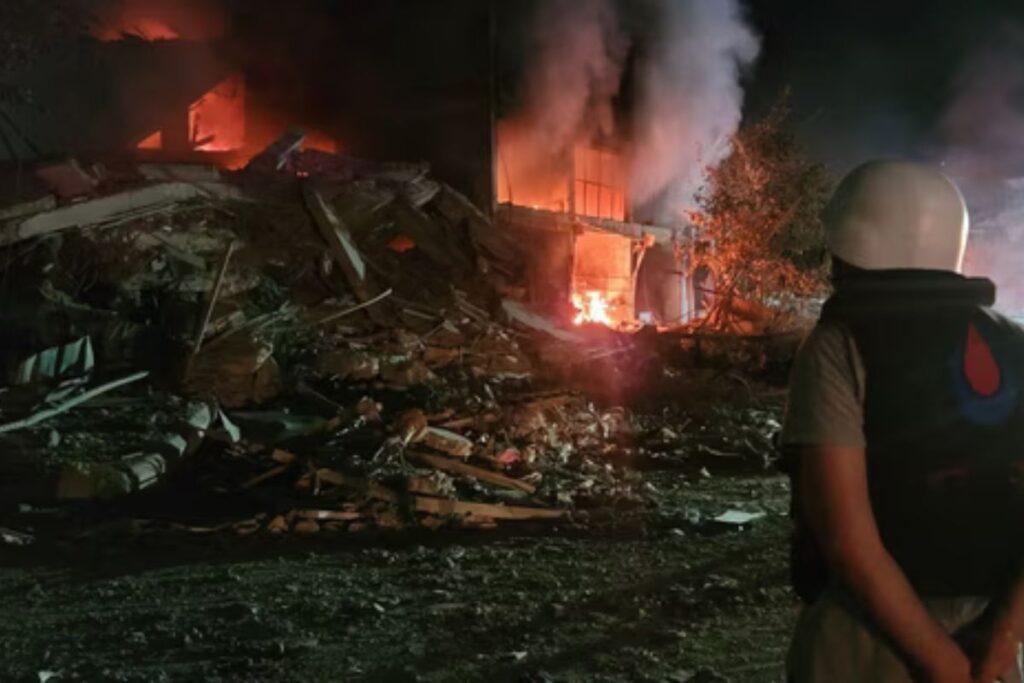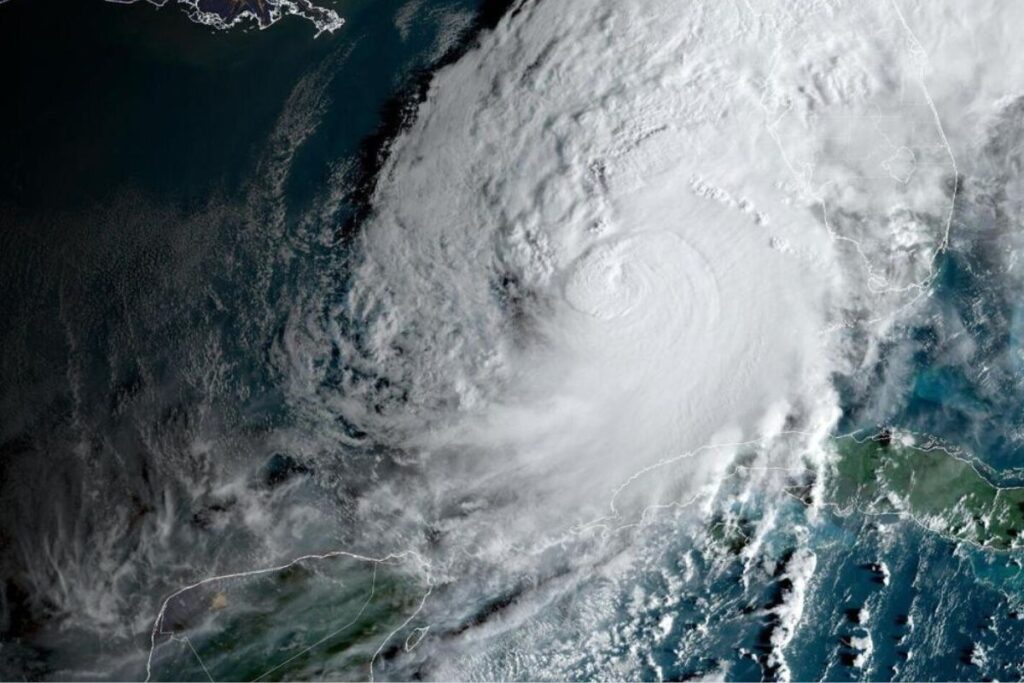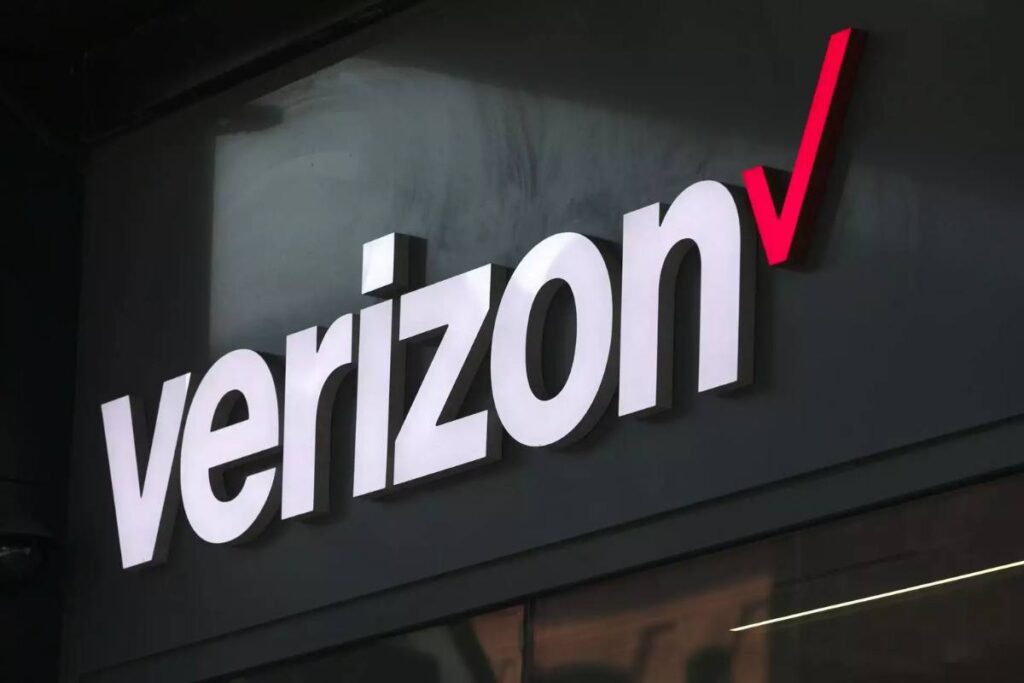Israeli Airstrike Destroys Lebanon Mosque Amid Intensifying Conflict with Hezbollah

Tensions between Israel and Hezbollah have escalated significantly, leading to a full-blown conflict that has impacted both nations. What began as cross-border exchanges surrounding the ongoing Gaza war has now resulted in major hostilities between the Israeli military and the Iran-backed Hezbollah group. The situation intensified on September 23, 2024, with continuous clashes in southern Lebanon. In a significant development on Sunday, Israeli forces targeted a Lebanon mosque, escalating the ongoing violence. Israeli Airstrike Levels Mosque in Southern Lebanon On the morning of October 13, 2024, an Israeli airstrike destroyed an old mosque in the village of Kfar Tibnit, located in southern Lebanon. The attack occurred around 3:45 am local time (1245 GMT), completely leveling the mosque, according to Lebanon’s National News Agency (NNA). The Lebanon mosque held a special place in the community, as described by the village mayor, Fuad Yassin. He told AFP, “It was a significant place because families used to gather in the square right next to it on special occasions.” The mosque, which stood for over a century, is now in ruins due to the airstrike. Continued Clashes Between Hezbollah and Israeli Forces As Israel intensified its military operations against Hezbollah, the militant group reported intense fighting in the southern Lebanese village of Ramya. Hezbollah claimed that Israeli forces attempted to infiltrate the village, leading to fierce clashes. This incident marks another chapter in the escalating hostilities between the two sides, which have persisted for over a year. The destruction of the Lebanon mosque is just one of many incidents highlighting the increasing intensity of the conflict. Both sides continue to exchange fire and carry out airstrikes, further destabilizing the region. Strikes on Lebanese Red Cross Teams In addition to the Israeli airstrike on Kfar Tibnit, another Israeli attack targeted a house in Sirbin, southern Lebanon, which led to more casualties. Lebanese Red Cross paramedics, who had been dispatched to the site to provide aid, were also affected by the second round of strikes. The Red Cross issued a statement describing the incident: “As the team was searching for casualties to rescue, the house was hit for a second time, resulting in concussions to the volunteers and damage to the two ambulances.” Fortunately, the paramedics only sustained minor injuries. However, the attack underscores the increasingly dangerous conditions for humanitarian workers trying to assist those caught in the crossfire. UN Peacekeepers Caught in the Crossfire The United Nations Interim Force in Lebanon (UNIFIL) also confirmed that a third peacekeeper had been injured due to Israeli airstrikes. The soldier, who was hit by gunfire on Friday, underwent surgery and is now in stable condition. The injury marks yet another dangerous moment for the UN mission, which has been tasked with maintaining peace along the Lebanon-Israel border. UNIFIL operates with over 10,000 peacekeepers from countries such as Italy, France, and India. Their mission has become increasingly precarious in recent weeks, with two other peacekeepers having been wounded earlier in the week. These soldiers were injured when an Israeli strike hit a UN watchtower in Naqoura, a coastal town in southern Lebanon. International Response and Criticism The intensifying conflict and the targeting of humanitarian organizations and peacekeepers have sparked international concern and condemnation. France, in particular, has reacted strongly, summoning Israel’s ambassador to express its disapproval of the attacks on UNIFIL forces. Similarly, Italy and Spain have issued statements condemning the strikes, labeling them as “unjustifiable.” US President Joe Biden has also urged Israel to exercise caution, emphasizing the need to avoid harming UN personnel in the region. Additionally, Russia has called on Israel to cease its “hostile actions” against peacekeeping forces, demanding an end to strikes that endanger international missions. Evacuations and Civilian Displacement In response to the escalating violence, Israel has issued evacuation orders for 23 villages in southern Lebanon. The Israeli Defense Forces (IDF) claim that Hezbollah is using these areas to store weapons and launch attacks. Residents have been urged to move north of the Awali River to avoid the conflict. However, Hezbollah has denied the accusations that it is using civilian areas as cover for its operations. The evacuation orders add to the growing humanitarian crisis in Lebanon. More than 1.2 million people have already been displaced by the ongoing conflict, according to official Lebanese government figures. The toll of the war has been devastating, with over 2,100 people killed and more than 10,000 injured since the fighting began. Conclusion: The Worsening Situation in Lebanon As the conflict between Israel and Hezbollah continues to spiral, the human cost of the violence is mounting. The destruction of significant cultural and religious landmarks, such as the Lebanon mosque in Kfar Tibnit, reflects the heavy toll that the war is taking on communities in Lebanon. The injuries to peacekeepers and humanitarian workers further highlight the challenges faced by those attempting to maintain peace and provide aid in the region. The international community has called for restraint and urged both sides to avoid targeting civilians and peacekeeping forces. However, the conflict shows no signs of abating, with cross-border exchanges continuing to fuel instability. The coming weeks will be critical in determining whether diplomatic efforts can successfully de-escalate the situation or if the region will continue to plunge deeper into violence. For more insights, follow The Business Tycoon
Ratan Tata, Icon of Global Business and Expansion, Passes Away at 86

Ratan Tata, the legendary industrialist and philanthropist, passed away in Mumbai on October 9, 2024, at the age of 86. He is widely recognized for transforming Tata Group into a global business empire and expanding its presence to over 100 countries. His death was announced by Tata Group Chairman Natarajan Chandrasekaran, who praised Tata as a “remarkable leader whose unparalleled contributions have not only shaped the Tata Group but also significantly impacted the nation’s growth.” Chairmanship and Global Expansion As Chairman of Tata Group from 1991 for over two decades, Ratan Tata’s leadership brought the 156-year-old business into the global spotlight. The conglomerate now operates across more than 100 countries and reported $165 billion in revenue for the fiscal year ending in March 2024. Tata’s vision and ambition were instrumental in the group’s vast portfolio, which spans various sectors from automobiles and steel to technology and hospitality. Strategic Acquisitions Under Ratan Tata’s stewardship, the group acquired prominent international businesses, including British steel giant Corus Group in 2007 and luxury carmaker Jaguar Land Rover in 2008. Despite these ambitious moves, Tata’s expansion came at a time of global economic uncertainty, including the 2008 financial crisis, which brought new challenges to the acquisitions. Kavil Ramachandran, executive director of the Thomas Schmidheiny Center for Family Enterprise at the Indian School of Business, noted that “Ratan Tata envisioned big and pushed the Tata empire beyond Indian borders. However, some initiatives, although visionary, faced timing issues.” Leadership Challenges Internal Struggles Ratan Tata’s first tenure as Tata Group Chairman lasted 21 years until his retirement in 2012. He later returned briefly in 2016 during a leadership crisis following the dismissal of his successor, Cyrus Mistry. This period marked one of two intense internal struggles during Tata’s career, the first occurring in 1991 when he initially assumed leadership and had to contend with long-serving executives holding significant control within the company. Despite these conflicts, Tata prevailed both times, securing his legacy within the conglomerate. The Mistry Controversy In 2016, after Mistry’s ouster as Chairman of Tata Sons, the Tata Group’s main holding company, a bitter legal battle ensued between the Mistry family and Tata Sons. The dispute strained the 70-year-old partnership between the two families and led to Mistry’s family signaling its intention to sell its 18% stake in Tata Sons in 2020. A Legacy of Compassion The 2008 Mumbai Terror Attacks Tata’s leadership extended beyond the boardroom. During the 2008 Mumbai terror attacks, the group’s iconic Taj Mahal Palace Hotel was one of the primary targets. Ratan Tata personally visited the families of the 31 people, including 11 employees, who lost their lives in the attack. His compassionate approach and attention to the victims’ families underscored his philanthropic side and deep-rooted commitment to the community. Personal Life and Philanthropy A Private Individual Despite his vast professional accomplishments, Tata remained a private individual, never marrying and having no children. His passing leaves a significant leadership gap at the helm of Tata Trusts, a charitable organization controlling 66% of Tata Sons. Tata Trusts, traditionally led by a Tata family member, plays a key role in guiding the conglomerate’s direction through its shareholding in Tata Sons. Support for Startups In his later years, Tata became an enthusiastic supporter of startups, backing ventures such as Ola Electric Mobility, which saw tremendous success with its 2024 public offering, and Goodfellows, a platform fostering intergenerational friendships. Early Life and Education Childhood and Family Background Born in Mumbai on December 28, 1937, Ratan Naval Tata was raised by his grandmother after his parents, Naval and Sooni Tata, divorced when he was 10. He attended school in Mumbai before studying at Cornell University, where he initially pursued mechanical engineering. However, he later switched to architecture, fulfilling a personal passion despite his father’s disapproval. Career Beginnings Tata returned to India after college due to his grandmother’s ill health, opting to join the family business rather than accept a job offer from IBM. Ratan Tata’s career with the Tata Group began in 1962, with guidance from then-chairman Jehangir Ratanji Dadabhoy (JRD) Tata. JRD, a distant relative, mentored Ratan Tata, and by 1991, Ratan was chosen to lead the conglomerate. Major Achievements The Indica and Expansion into Automobiles At the time Ratan Tata became chairman, Tata Group was largely domestic-focused, with Tata Consultancy Services still in its infancy and its automotive division not yet producing passenger cars. The 1990s marked a turning point for India’s economy, which began to open up to private enterprises following decades of socialist policies. As foreign automakers such as Ford and Hyundai entered the Indian market, Tata decided to launch the country’s first locally produced passenger vehicle, the Tata Indica, which was released in 1998 and referred to by Tata as “my baby.” Bold Acquisitions During the 2000s, as India’s economy surged, Tata Group expanded its global presence, acquiring major foreign businesses like Corus and Jaguar Land Rover. Despite these triumphs, the 2008 financial crisis and a global steel glut created challenges for the group, leading to financial strain and widespread criticism that Tata had overpaid for the Corus deal. Tata Steel eventually downsized its European operations in response to declining demand and rising costs. Navigating Challenges The Jaguar Land Rover Experience The Jaguar Land Rover acquisition also encountered obstacles, including slumping demand in China and the uncertainty surrounding Brexit. However, the Tata Group successfully turned around the luxury car brand, which continued to grow in prestige despite global market turbulence. The Nano Microcar One of Ratan Tata’s most ambitious endeavors, the Nano microcar, aimed at providing affordable transportation to millions of Indians, failed to meet its target. Launched in 2008 with a price tag of 100,000 rupees ($1,190), the Nano suffered from initial quality concerns and a lack of demand, leading to its discontinuation in 2018. Final Triumph Air India Acquisition Perhaps the most symbolic achievement of Tata’s career came in 2021 when Tata Sons regained control of Air India, the nation’s flagship airline, almost 90 years after it was
Hurricane Milton Approaches Florida: Time Running Out for Evacuations

Florida is bracing for the impact of Hurricane Milton, a powerful Category 5 storm barreling toward the west coast of the state. With millions of residents ordered to evacuate, officials are warning that time is running out to leave, as the storm poses a serious threat of catastrophic damage and life-threatening conditions. As of early Wednesday, Hurricane Milton was about 360 miles (580 kilometers) southwest of Tampa, moving toward the region with maximum sustained winds of 160 mph (260 km/h). Although the National Hurricane Center (NHC) expects the storm to weaken slightly before landfall, it will still be a major hurricane, threatening the densely populated Tampa Bay area. This region, home to more than 3.3 million people, has been largely spared from direct hits by major hurricanes for over a century, making this event particularly alarming. Urgent Evacuation Orders in Place Authorities have issued mandatory evacuation orders across 11 Florida counties, covering a population of about 5.9 million people. Florida’s highways have been clogged with cars as residents scramble to escape the approaching storm, but for many, the window for safe evacuation is rapidly closing. Officials are urging anyone still in the storm’s projected path to leave immediately. Tampa Mayor Jane Castor emphasized the danger posed by the anticipated 15 feet (4.5 meters) of storm surge, which is enough to submerge homes entirely. “If you’re in it, basically that’s the coffin that you’re in,” Castor grimly warned, stressing the importance of heeding evacuation orders. Milton’s Path and Impact on Florida Forecasters predict that Hurricane Milton will retain its strength as it crosses central Florida on Thursday, heading toward the Atlantic Ocean. The precise track of the storm remains uncertain, but recent projections have shifted it slightly south of Tampa, increasing the risk for other communities along the coast. Regardless of the exact path, the storm is expected to bring destructive winds, heavy rainfall, and dangerous storm surges across a wide swath of the state. The hurricane is hitting Florida just two weeks after Hurricane Helene devastated parts of western Florida, causing widespread flooding and damage. Helene left at least 230 dead across the southern U.S., and many communities are still struggling to recover. In towns like Punta Gorda, located about 100 miles (160 kilometers) south of Tampa, residents are still cleaning up from the destruction. Streets remain lined with piles of debris—damaged furniture, appliances, and other belongings—dragged out of flooded homes. Residents Face Tough Decisions Despite the dire warnings, some residents are choosing to ride out the storm. Scott Joiner, an accountant and art collector in Punta Gorda, is one of them. His home was flooded by Hurricane Helene, and he witnessed bull sharks swimming through the streets. Still, he plans to stay through Hurricane Milton, even though authorities have made it clear that anyone staying behind will be on their own. “Water is a blessing to have,” Joiner said, “but it is very deadly.” Despite the danger, he’s prepared to face the storm again, unwilling to leave the home he built 17 years ago. Others, however, are not taking any chances. Evan Purcell, a resident of Anna Maria Island, was preparing to evacuate on Tuesday. After Helene left his home with thousands of dollars in damage, he’s determined not to risk it again. Packing up his father’s ashes and trying to catch his 9-year-old cat, McKenzie, Purcell expressed a sense of dread as Milton approached. “I’m still in shock over the first one, and here comes round two,” he said. “I just have a pit in my stomach about this one.” Preparations Amidst Debris In addition to the human toll, state and local governments are racing to clean up debris left over from Hurricane Helene. Officials fear that loose wreckage could turn into deadly projectiles when Hurricane Milton strikes. Florida Governor Ron DeSantis reported that over 300 dump trucks have been deployed to remove more than 1,300 loads of debris in affected areas. International Impact While Florida braces for the worst, Milton has already impacted other regions. In Mexico’s Yucatan Peninsula, the storm passed just offshore, causing minor damage. Power lines, trees, and small structures were damaged near the coast, but no fatalities or major injuries have been reported, according to Yucatan Governor Joaquín Díaz. Final Call for Evacuations As Hurricane Milton closes in on Florida, officials continue to urge residents to evacuate if they are in the storm’s path. First responders have made it clear that they will not be able to assist during the height of the storm, and those remaining behind will be on their own until conditions improve. For those still considering whether to evacuate, the message is clear: leave now while you still can. Keep Reading: The Business Tycoon
Verizon Resolves Nationwide Outage After Thousands Report Disruptions on Monday Morning

[Source-ET-Telecom] Verizon, one of the largest telecommunications providers in the U.S., announced that it has successfully resolved a widespread outage that disrupted services for thousands of its customers on Monday morning. The issue left many users across the country unable to make calls, send text messages, or access the internet, sparking frustration and complaints on social media platforms. What Happened? The outage began early on Monday morning, affecting users in major cities such as New York, Los Angeles, Chicago, and Houston. According to DownDetector, a website that tracks real-time outage reports, over 10,000 Verizon customers reported disruptions by 9 a.m. Eastern Time. Many users experienced dropped calls, slow or no internet connectivity, and difficulty in sending and receiving text messages. Social media platforms like Twitter were flooded with complaints and questions about the service interruptions, as users sought answers and updates from them. The sudden disruption affected not only individual users but also businesses that rely on Verizon’s network for day-to-day operations, leading to significant inconvenience. Verizon’s Response Verizon responded promptly to the outage reports, acknowledging the issue and assuring customers that their technical teams were working to identify and resolve the problem. By mid-morning, the company tweeted: “We are aware of an issue impacting service for some of our customers. Our team is working quickly to resolve it. Thank you for your patience.” Verizon later provided an update stating that the issue had been identified as a technical fault in their network system and that their engineers were implementing a solution. By noon, the company announced that the problem had been fully resolved and that services were back to normal for affected customers. “Service has been restored for those impacted by the outage earlier today,” Verizon tweeted. “We apologize for the inconvenience and thank you for your understanding.” Verizon down? Users reporting phone, text outage nationwide Impact and Customer Reaction The outage affected a large number of customers, with many expressing their frustration online. Several users noted that they were unable to make urgent calls or access important information during the downtime. Despite the quick resolution, some customers raised concerns about the reliability of the service, particularly for a major provider like Verizon, which is known for its strong network coverage. Businesses, in particular, felt the impact of the outage, as many rely on Verizon’s network for essential communication and data services. The interruption led to a temporary disruption in business operations for some, causing delays and productivity losses. What’s Next for Verizon? While the issue has been resolved, Verizon has not yet disclosed the specific cause of the outage. The company stated that they are conducting a thorough review of the incident to prevent similar disruptions in the future. This event highlights the importance of network reliability for telecom giants, especially as the demand for seamless connectivity continues to grow. Verizon’s ability to quickly address and resolve the issue is commendable, but customers will be looking for reassurances that steps are being taken to avoid such incidents in the future. For now, the focus is on restoring customer confidence and ensuring uninterrupted service moving forward. For more insights, follow The Business Tycoon
